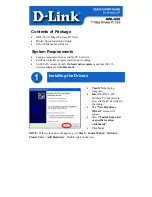
Chapter 7
NI-488.2 Programming Techniques
©
National Instruments Corporation
7-3
NI-488.2 User Manual for Windows
If you are using device-level calls, the NI-488.2 software automatically
sends the HS488 configuration message to devices. If you enabled the
HS488 protocol in the NI-488.2 Configuration utility, the NI-488.2
software sends out the HS488 configuration message when you use
ibdev
to bring a device online. If you call
ibconfig
to change the GPIB cable
length, the NI-488.2 software sends out the HS488 message again, the next
time you call a device-level function.
If you are using board-level traditional NI-488.2 calls or multi-device
NI-488.2 calls and you want to configure devices for high-speed, you must
send the HS488 configuration messages using
ibcmd
or
SendCmds
. The
HS488 configuration message is made up of two GPIB command bytes.
The first byte, the Configure Enable (CFE) message (hex 1F), places all
HS488 devices into their configuration mode. Non-HS488 devices should
ignore this message. The second byte is a GPIB secondary command that
indicates the number of meters of cable in your system. It is called the
Configure (CFGn) message. Because HS488 can operate only with cable
lengths of 1 to 15 m, only CFGn values of 1 through 15 (hex 61 through 6F)
are valid. If the cable length was configured properly in the NI-488.2
Configuration utility, you can determine how many meters of cable are in
your system by calling
ibask
(option
IbaHSCableLength
) in your
application. For more information about CFE and CFGn messages, refer to
the Multiline Interface Messages topic in the NI-488.2 online help. For
instructions on accessing the online help, refer to the
section in
.
System Configuration Effects on HS488
Maximum HS488 data transfer rates can be limited by your host computer
and GPIB system setup. For example, when using a PC-compatible
computer with PCI bus, the maximum obtainable transfer rate is
8 Mbytes/s, but when using a PC-compatible computer with ISA bus, the
maximum transfer rate obtainable is only 2 Mbytes/s. The same IEEE 488
cabling constraints for a 350 ns T1 delay apply to HS488. As you increase
the amount of cable in your GPIB configuration, the maximum data
transfer rate using HS488 decreases. For example, two HS488 devices
connected by two meters of cable can transfer data faster than four HS488
devices connected by 4 m of cable.
















































